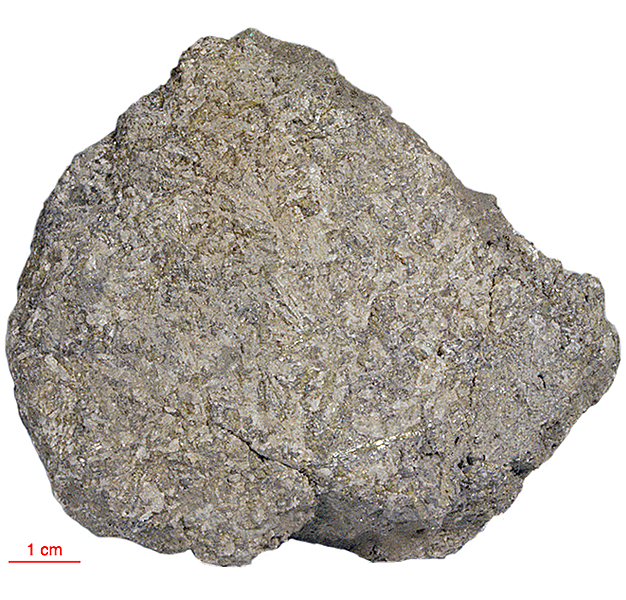
Fact sheet
15085 is a coarse-grained mare basalt dominated by pigeonite. Pyroxene and plagioclase compose 90% of the rock. Pyroxene is dominant, occurring both as large phenocrysts and sub-ophitically intergrown with plagioclase laths. It zones outward to pyroxferroite and is often beautifully twinned and zoned. Accessories include cristobalite, tridymite (large lath in rotation 2), ilmenite, spinel, metallic iron, troilite and fayalite (pale green crystal cluster in rotation 1).
The sample weighed 400.5 grams before analysis and has been dated at 3.35±0.04 billion years (Ar/Ar).
Further details of this and other Apollo samples are here: http://curator.jsc.nasa.gov/lunar/
The Apollo 15 landing site was in the Apennine Highlands, and close to Hadley Rille — a long, narrow winding valley. Approximately 76 kg of lunar material, including soil, rock, core-tube and deep-core samples, were returned to Earth.
This mission was the first flight of the Lunar Roving Vehicle which allowed the astronauts to venture further from the Lunar Module than in previous missions. During three periods of extravehicular activity, or EVA, on July 31st, and August 1st and 2nd, Scott and Irwin completed a record 18 hours, 37 minutes of exploration, travelling 17.5 miles, in the first car that humans had ever driven on the Moon.
Apollo 15 was launched on 26 July 1971.






